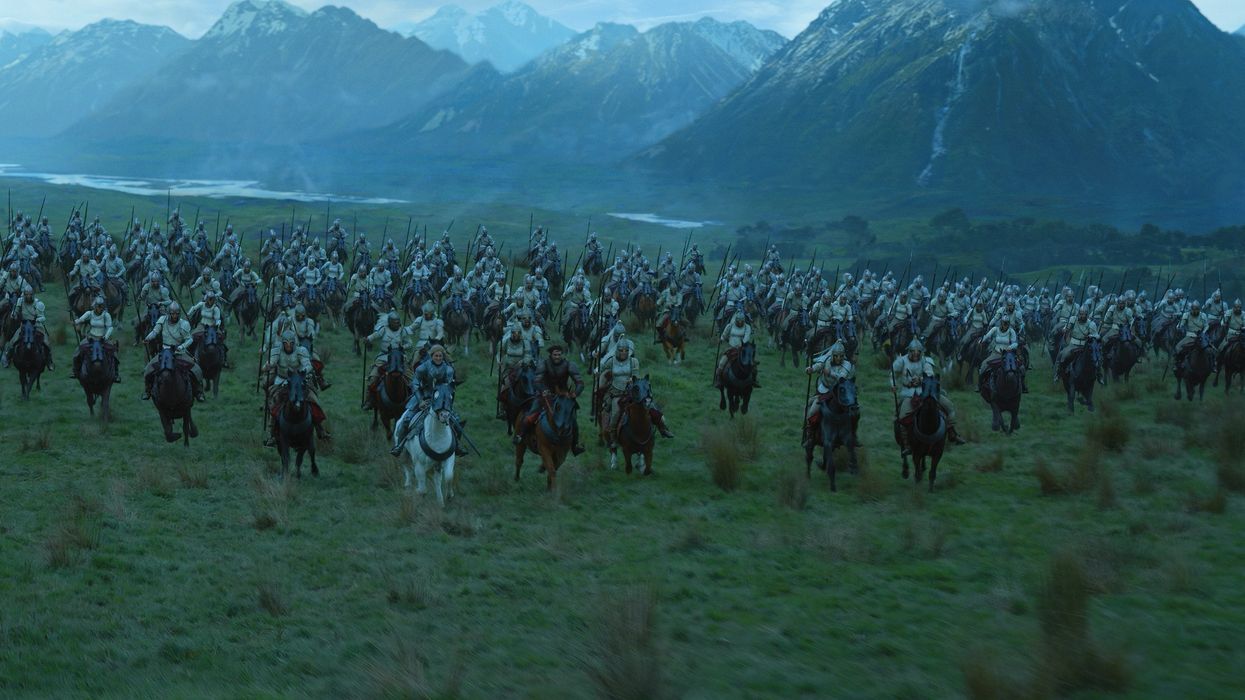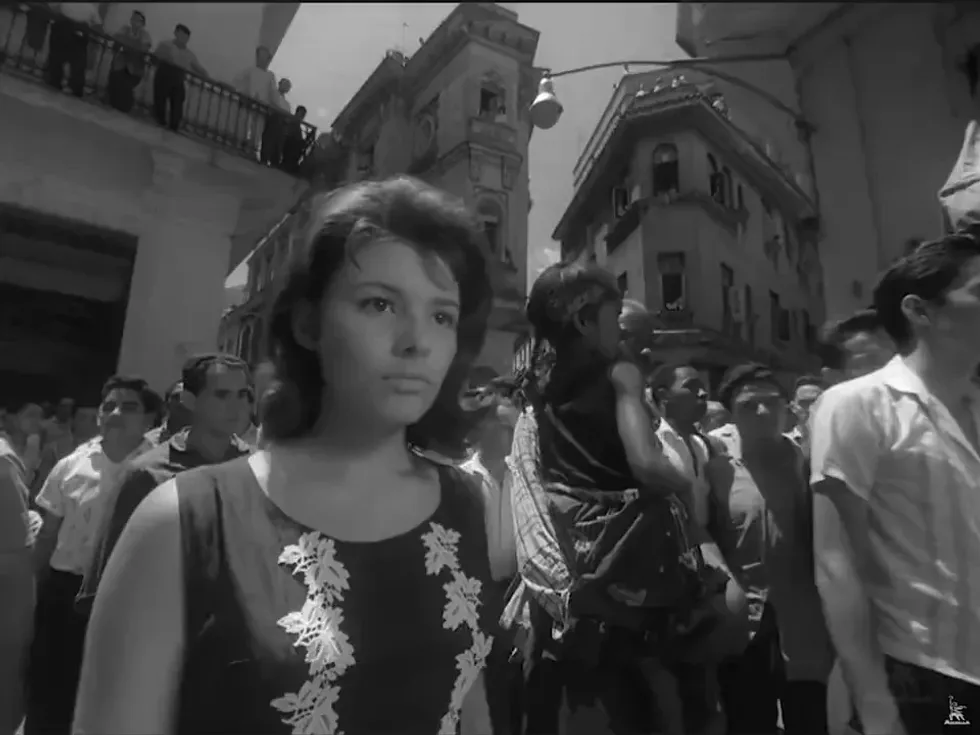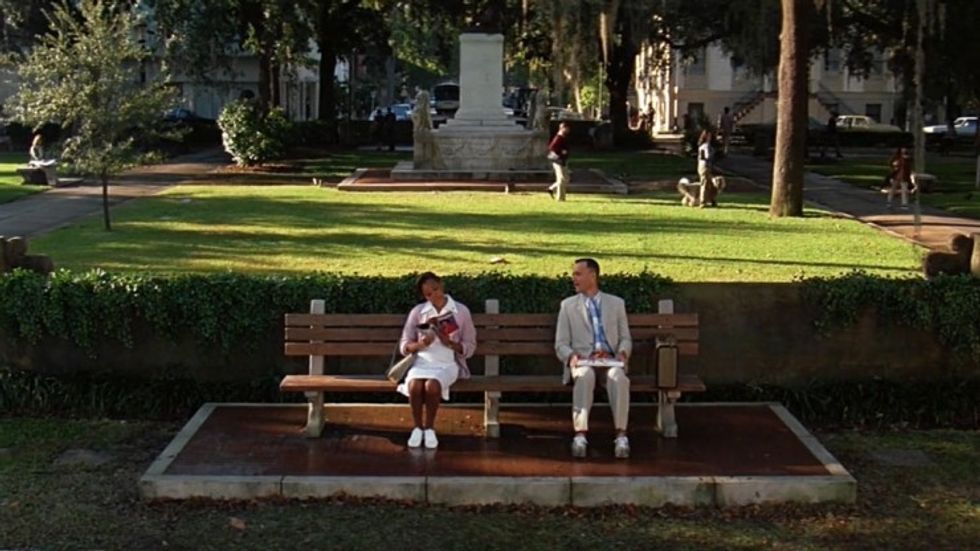What is a Crane Shot?
Learn how to master this intricate camera move.

In this sequence from Episode 6 of 'Lord of the Rings: The Rings of Power', Alex Disenhof, ASC and crew employed a U-Crane vehicle to track the galloping horses.
Ever watch a TV show or movie and suddenly feel the camera rising higher and higher in the air? Or Maybe you start high and suddenly are lowering into a scene from above?
These shots are achieved with a handy, titularly title tool called a crane, and offer some of the most iconic visuals in all of cinema history. The creativity of filmmakers lies not only in storytelling but also in the visual techniques they employ. And the crane shot is a perfect example of that sentiment.
Today, we'll go over this shot, look at some examples, and teach you how you can use it in your own work.
Let's dive in.
Crane Shot Definition

Soy Cuba
| Criterion
In film and video production, a crane shot refers to any shot captured by a camera mounted on a mechanical arm called a crane or a jib.
This setup provides filmmakers with incredible flexibility, allowing the camera to move vertically, horizontally, and often in sweeping arcs.
The result is dynamic footage that transcends the limitations of static cameras.
Why Do Filmmakers Love Crane Shots?
Crane shots offer several unique advantages to filmmakers:
- Elevated Perspective: Cranes grant a bird's-eye view of a scene, giving the audience a broader, more expansive look. This elevated viewpoint can evoke a sense of grandeur or create a sense of awe.
- Reveals and Scope: Starting high and moving downwards, crane shots are perfect for establishing shots. They introduce locations, unveil hidden elements, or set the stage for a narrative development.
- Fluid Movement: Unlike dollies or tracks that are ground-based, cranes boast incredible range in all directions. This enables them to follow characters smoothly or even swoop over obstacles.
- Dramatic Effect: The inherent dynamism of a crane shot adds emotional weight and visual flair to a moment. A slow crane up may signal a character's triumph or a sense of foreboding.
Crane Shot Examples
The prevalence of crane shots in film and TV makes it hard to pick a favorite, but I wanted to go over some that are famous.
Some iconic crane shot examples from cinema and television include:
- Gone with the Wind (1939): The Civil War epic features a breathtaking crane shot revealing the aftermath of the Battle of Atlanta, showcasing countless wounded soldiers.
- The Lord of the Rings Trilogy (2001 - 2003): Peter Jackson's fantasy epic utilizes sweeping crane shots to immerse viewers in the breathtaking landscapes of Middle-earth, bringing battles and journeys to life with incredible scale.
- Game of Thrones (2011 - 2019): The series employed crane shots extensively to reveal armies, build dramatic tension in battle scenes, and showcase the intricate construction of its fantasy cities.
- Touch of Evil (1958): Orson Welles' crime-noir masterpiece opens with one of the most celebrated crane shots in film history. The shot begins with a close-up of a ticking time bomb, then ascends along a crane, finally culminating in a wide shot of a busy border town moments before the explosion.
- Citizen Kane (1941): Another Orson Welles classic, Citizen Kane, features a pivotal crane shot that begins high above the stage where Susan Alexander is performing. The camera descends, passes through various levels of the theater, and finally focuses on a scathing newspaper review in a critic's hand.
- La La Land (2016): The vibrant opening number of this modern musical features a stunning crane shot. The camera weaves through a massive traffic jam on a Los Angeles highway as dancers erupt into song atop their vehicles.
The Modern Crane Shot

Forrest Gump
| Paramount
Advances in technology have made crane shots more accessible and dynamic than ever before. The rise of drones, smaller, more agile cranes, and even handheld gimbals allow filmmakers flexibility and versatility.
They can simulate crane-like movements at a lower cost and in tighter spaces.
Crane shots offer a powerful tool for visual storytelling, and they will continue to elevate our cinematic experiences. From epic battle scenes to intimate character moments, the rise and fall of this technique creates a visual symphony within the language of film.
Let me know your favorite crane shot in the comments.











